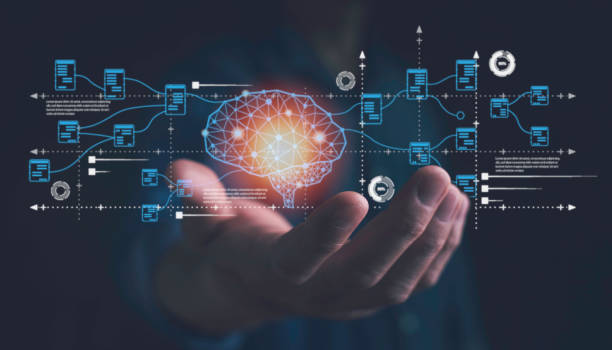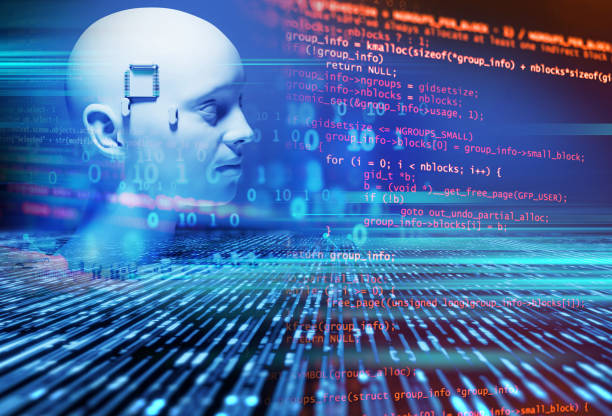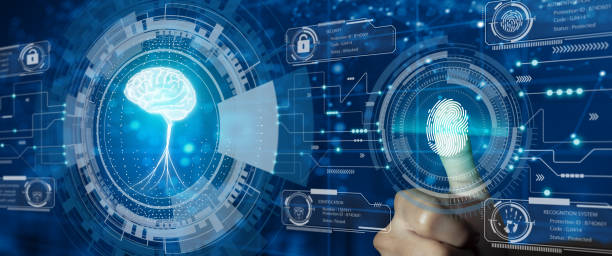Introduction
In the rapidly evolving landscape of intellectual property (IP) law, staying ahead of the curve is crucial for law firms to provide effective and efficient services to their clients. One of the key drivers of this transformation is the integration of artificial intelligence (AI) into various aspects of legal practice. In this blog, we will explore how AI is revolutionizing IP law firms, enhancing both efficiency and accuracy in a field where precision is paramount.

Uses of AI in IP Law Firms
The integration of Artificial Intelligence (AI) into intellectual property (IP) law firms has become increasingly prevalent, offering a multitude of benefits that enhance efficiency, accuracy, and overall effectiveness in legal practice. Here are some key uses of AI in IP law firms:
1. Document Review and Management
Automated Document Analysis: AI technologies, particularly Natural Language Processing (NLP) algorithms, enable law firms to automate the review of vast amounts of legal documents. This includes contracts, patent applications, and other relevant materials. AI systems can quickly identify key information, flag potential issues, and significantly expedite the document review process.
Document Classification and Organization: AI helps in categorizing and organizing documents, making it easier for legal professionals to access relevant information quickly. This ensures that critical documents are readily available, streamlining the workflow within the firm.
2. Patent Search and Prior Art Analysis
Prior Art Searches: AI-powered tools can conduct comprehensive prior art searches more efficiently than traditional methods. These tools analyze massive databases of existing patents and scientific literature, providing legal professionals with a thorough understanding of the state of the art relevant to a particular invention.
Automated Patent Drafting: AI algorithms assist in drafting patent applications by suggesting language based on patterns identified in previously granted patents. This can significantly reduce the time and effort involved in the patent application process.
3. Legal Research and Case Analysis
Data Mining and Legal Research: AI technologies enable legal professionals to sift through extensive legal databases, academic journals, and case law quickly. AI-driven legal research tools can identify relevant cases, statutes, and precedents, facilitating comprehensive case analysis.
Predictive Analytics: AI algorithms analyze historical case data to predict potential outcomes and trends. This aids legal professionals in making informed decisions about case strategy, settlement negotiations, and risk assessment.
4. Trademark and Copyright Monitoring
Trademark Clearance Searches: AI tools streamline the process of conducting trademark clearance searches. By quickly scanning trademark databases and other relevant sources, AI can identify potential conflicts, allowing firms to advise clients on the availability of trademarks.
Copyright Infringement Detection: AI-driven systems monitor online platforms and content to detect potential copyright infringements. Automated tools can compare vast amounts of digital content against existing databases, helping law firms proactively protect their clients’ intellectual property rights.
5. Contract Analysis and Management
Automated Contract Review: AI facilitates the review and analysis of contracts by extracting key clauses, terms, and conditions. This not only accelerates the contract review process but also helps ensure that all relevant information is considered.
Contract Lifecycle Management: AI systems can assist in managing the entire lifecycle of contracts, from creation to renewal and termination. This includes tracking key dates, obligations, and compliance requirements.
6. Enhanced Due Diligence
Mergers and Acquisitions: AI technologies can streamline due diligence processes in M&A transactions by quickly analyzing large volumes of documents to identify potential legal risks and liabilities.
Risk Assessment: AI tools assist in assessing the legal and financial risks associated with specific IP transactions. This allows law firms to provide more accurate and timely advice to clients.
7. Client Communication and Engagement
Chatbots and Virtual Assistants: AI-powered chatbots and virtual assistants can enhance client communication by providing instant responses to common queries, scheduling appointments, and offering basic legal information.
Client Relationship Management (CRM): AI-driven CRM systems help law firms better understand client preferences, track interactions, and anticipate client needs, thereby improving overall client satisfaction.
8. Automating Routine Tasks with AI
One of the primary ways AI is transforming IP law firms is through the automation of routine tasks. Document review, for instance, is a critical but time-consuming process in IP law. AI-powered tools can quickly analyze large volumes of documents, identifying relevant information, and flagging potential issues. This not only expedites the review process but also minimizes the likelihood of human errors.
Furthermore, AI-driven technologies are streamlining the patent application process. From drafting patent claims to conducting prior art searches, AI tools can significantly reduce the time and resources traditionally required for these tasks. This not only allows legal professionals to focus on more strategic aspects of their work but also ensures a quicker turnaround for clients.
9. Enhancing Legal Research and Analysis
In the field of intellectual property law, staying abreast of the latest precedents, rulings, and legal interpretations is essential. AI-powered legal research tools are proving invaluable in this regard. These tools can sift through vast databases of legal documents, academic articles, and court rulings to provide legal professionals with up-to-date and relevant information. This not only saves time but also ensures that legal arguments are grounded in the latest jurisprudence.
Natural language processing (NLP) algorithms, a subset of AI, are making legal research even more efficient. These algorithms can understand and interpret human language, enabling legal professionals to ask complex legal questions in a natural way. This is particularly beneficial in a field where the nuances of language can significantly impact the outcome of a case.
10. Improving Predictive Analytics
AI’s ability to analyze vast amounts of data is also being harnessed to improve predictive analytics in IP law. By examining historical case data, AI algorithms can identify patterns, trends, and potential outcomes. This allows legal professionals to make more informed decisions about case strategy, settlement negotiations, and risk assessment.
Predictive analytics can be particularly beneficial in patent litigation, where the outcome of a case often depends on the interpretation of complex technical and legal issues. AI tools can assist legal professionals in predicting the likelihood of success in various scenarios, allowing for more strategic decision-making.

AI in Trademark and Copyright Law
Artificial Intelligence (AI) is playing a transformative role in the practice of trademark and copyright law, offering innovative solutions to challenges in areas such as clearance searches, infringement detection, and the management of intellectual property portfolios. Here are some key ways in which AI is making a significant impact in trademark and copyright law:
1. Trademark Clearance Searches
Automated Search Processes: AI-powered tools streamline the trademark clearance process by automating the search across vast trademark databases. These tools can quickly analyze and compare proposed trademarks against existing registrations, helping law firms identify potential conflicts.
Semantic Analysis: AI, particularly Natural Language Processing (NLP) algorithms, can perform semantic analysis to understand the meaning and context of trademarks. This enables a more nuanced assessment of potential conflicts beyond exact matches, reducing the risk of overlooking similar or related trademarks.
2. Trademark Registration and Filing
Automated Application Drafting: AI assists in the drafting of trademark applications by suggesting language based on historical data and accepted patterns. This not only accelerates the application process but also helps in crafting applications that are more likely to meet registration requirements.
Application Status Monitoring: AI tools can continuously monitor the status of trademark applications, providing real-time updates on any changes or actions taken by the trademark office. This proactive approach ensures that law firms can address issues promptly and keep clients informed.
3. Trademark Portfolio Management
Portfolio Analysis and Optimization: AI-driven analytics help law firms analyze and optimize their clients’ trademark portfolios. By evaluating factors such as registration status, geographical coverage, and potential risks, AI can assist in developing strategies for portfolio management.
Renewal Management: AI systems can automate the tracking of renewal deadlines and other critical dates associated with trademark registrations. This reduces the risk of inadvertent lapses in protection and ensures that clients’ trademarks are consistently maintained.
4. Copyright Infringement Detection
Content Monitoring: AI technologies monitor online platforms, websites, and digital content for potential copyright infringements. Automated systems can compare vast amounts of content against existing databases, identifying instances of unauthorized use and infringement.
Image and Text Recognition: AI-powered tools equipped with image and text recognition capabilities can detect instances where copyrighted material, such as images or written content, is being used without permission. This is particularly valuable in the context of digital content and online publications.
5. Anti-Piracy Measures
Digital Rights Management (DRM): AI is utilized in DRM solutions to protect digital content from unauthorized distribution and reproduction. These systems employ encryption and access control mechanisms to safeguard copyrighted material.
Online Enforcement: AI-driven tools assist in monitoring e-commerce platforms, social media, and other online spaces for counterfeit goods and unauthorized distribution of copyrighted material. This proactive approach helps law firms take swift action against infringement.
6. Contract Analysis and Licensing
Automated Contract Review: AI facilitates the review and analysis of licensing agreements, ensuring compliance with copyright terms and conditions. This not only accelerates the review process but also helps in identifying potential issues.
Royalty Management: AI systems can assist in managing royalty agreements by automating the tracking and calculation of royalty payments. This ensures accurate and transparent accounting for both licensors and licensees.
7. Due Diligence in Transactions
Mergers and Acquisitions: In M&A transactions involving intellectual property, AI technologies can assist in due diligence processes. By analyzing extensive datasets, AI helps identify potential risks and liabilities associated with copyright and trademark portfolios.
Risk Assessment: AI tools contribute to risk assessment by analyzing historical data and market trends. This assists law firms in providing clients with a more comprehensive understanding of the risks associated with intellectual property transactions.
8. Customs and Border Protection
AI for Anti-Counterfeiting: AI-powered systems are employed by customs authorities to identify and seize counterfeit goods at borders. Machine learning algorithms analyze patterns and characteristics of authentic products to distinguish them from counterfeit items.
Supply Chain Monitoring: AI helps in monitoring supply chains for potential copyright and trademark infringements. This is especially relevant in industries where intellectual property is at risk during the manufacturing and distribution processes.
In conclusion, AI is revolutionizing the landscape of trademark and copyright law by providing efficient and effective tools for legal professionals to navigate complex challenges. As technology continues to advance, the role of AI in these legal domains is likely to expand, further shaping the way intellectual property is protected, managed, and enforced in the digital age.
Conclusion
The integration of AI into IP law firms is reshaping the legal landscape, offering new possibilities for efficiency and accuracy. From automating routine tasks to enhancing legal research and analysis, AI is proving to be a valuable ally for legal professionals in the complex field of intellectual property law.
As law firms continue to embrace AI technologies, it is crucial to strike a balance between harnessing the benefits of automation and upholding ethical and legal standards. With responsible implementation, AI has the potential to revolutionize how IP law is practiced, ultimately benefiting both legal professionals and their clients. As we navigate this evolving landscape, it is clear that AI is not just a tool for the future but a transformative force that is already making a significant impact on the present and future of intellectual property law.

Leave a Reply